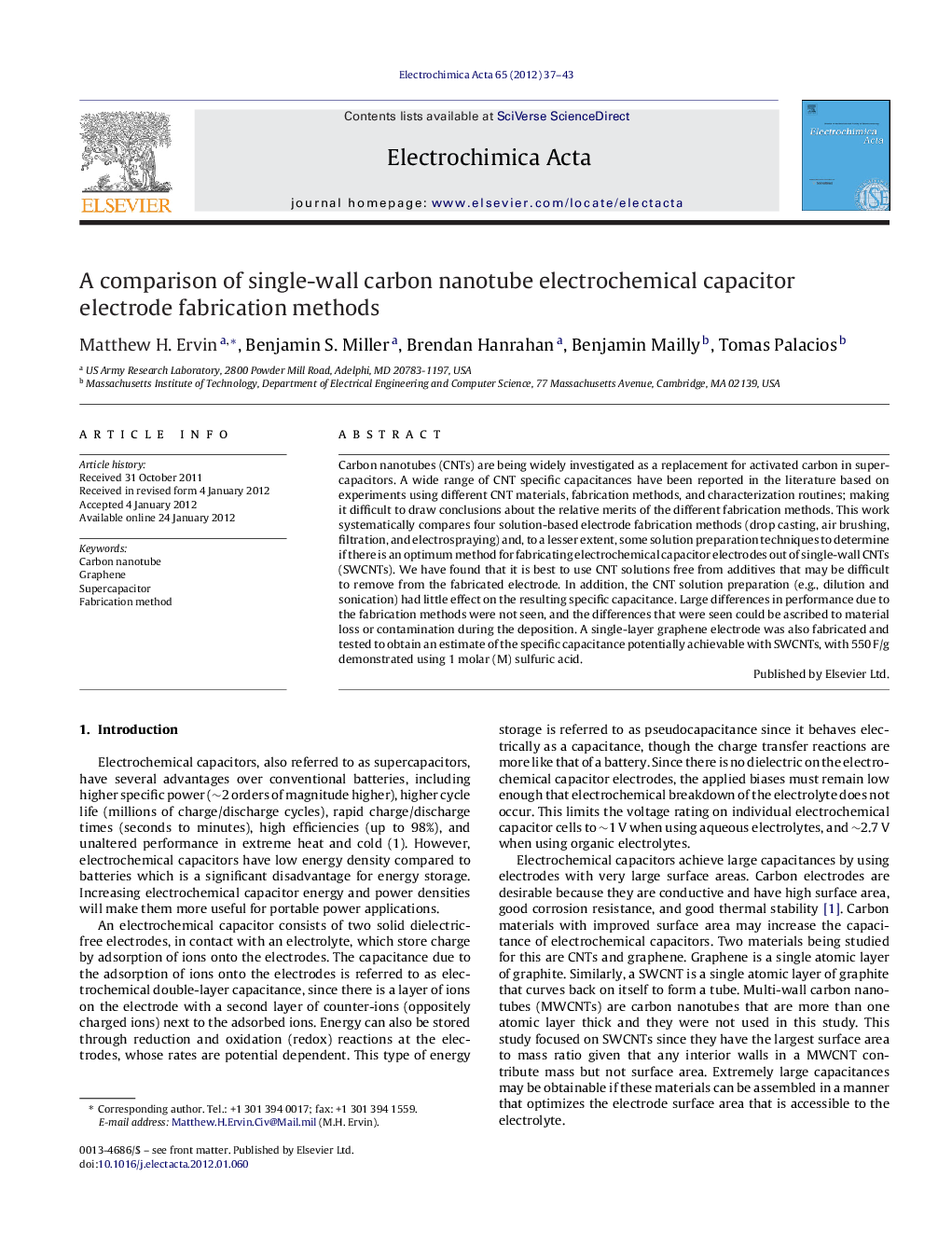| Article ID | Journal | Published Year | Pages | File Type |
|---|---|---|---|---|
| 188836 | Electrochimica Acta | 2012 | 7 Pages |
Carbon nanotubes (CNTs) are being widely investigated as a replacement for activated carbon in supercapacitors. A wide range of CNT specific capacitances have been reported in the literature based on experiments using different CNT materials, fabrication methods, and characterization routines; making it difficult to draw conclusions about the relative merits of the different fabrication methods. This work systematically compares four solution-based electrode fabrication methods (drop casting, air brushing, filtration, and electrospraying) and, to a lesser extent, some solution preparation techniques to determine if there is an optimum method for fabricating electrochemical capacitor electrodes out of single-wall CNTs (SWCNTs). We have found that it is best to use CNT solutions free from additives that may be difficult to remove from the fabricated electrode. In addition, the CNT solution preparation (e.g., dilution and sonication) had little effect on the resulting specific capacitance. Large differences in performance due to the fabrication methods were not seen, and the differences that were seen could be ascribed to material loss or contamination during the deposition. A single-layer graphene electrode was also fabricated and tested to obtain an estimate of the specific capacitance potentially achievable with SWCNTs, with 550 F/g demonstrated using 1 molar (M) sulfuric acid.
